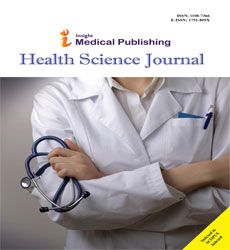Abstract
Depression and Coping Mechanism among Migrant Returnees from Middle East Countries in Amhara Region, Ethiopia
Objective: The purpose of this study was to assess risk factors and measure prevalence of depression disorder and coping mechanisms of migrant returnees from Middle East countries in Amhara Region, Ethiopia. Methods: Mixed method explanatory research design was employed on 376 randomly selected migrant returnees in six nominated towns of the region. Beck Depression Inventory (BDI-II), Abusive Behavioral Checklist (ABC) and Coping Strategy Indicator (CSI) were employed for assessment. Focus Group Discussion (FGD) and interview were also utilized. Descriptive statistics, independent ttest, dependent t-test and ANOVA were utilized to analyze the collected data. Result: The general life time prevalence of depression disorder was 34.8%. Specifically, headache, stomachache and irritability were most frequently reported core symptoms of depression by most of returnees, but suicidal thoughts, pessimism, and sadness occur as well. Likewise, imprisonment, ill health condition without access to medical care, serious physical injury from combat situation, witness of beatings to head or body, witness of torture, forced for separation from family members, isolation from others, for lack of shelter, lack of food or water, for evacuation under dangerous conditions, witness of rape or sexual abuse and physical abuse like beating to the body were highly reported traumatic experience by domestic migrant returnees respectively. In this study, the independent t-test result shows that there was statistically significant mean difference in sex (t(374)=-4.075, p<0.05), employment status (t(374)=2.178, p<0.05) and legal status of migrant returnees (t(374)=-9.058, p<0.05) in experiencing depression disorder. Besides, ANOVA result revealed that age (F(3,372)=19.003, p<0.05), educational status (F(2,372)=6.939, p<0.05), average monthly income of the returnees in Middle East countries (F(2,373)=44.072, pÃÆââ¬Â¹Ãâââ¬Å¡0.05), types of abuse that returnees’ face (F(3,372)=2.996, pÃÆââ¬Â¹Ãâââ¬Å¡0.05) had statistically significant effect on depression disorder of migrant returnees. Finally, problem solving, seeking social support and avoidance coping mechanisms were utilized by returnees in their due order. Conclusion: The life time prevalence of depression disorder was very high. Therefore, mental health service providers shall consider in diagnosing and treating depression disorder among migrant returnees.
Author(s):
Atinkut Zewdu and Muna Suleyiman
Abstract | Full-Text | PDF
Share this

Abstracted/Indexed in
- Google Scholar
- Genamics JournalSeek
- China National Knowledge Infrastructure (CNKI)
- CiteFactor
- CINAHL Complete
- Scimago
- Electronic Journals Library
- Directory of Research Journal Indexing (DRJI)
- EMCare
- WorldCat
- University Grants Commission
- Geneva Foundation for Medical Education and Research
- Secret Search Engine Labs
- Euro Pub
Open Access Journals
- Aquaculture & Veterinary Science
- Chemistry & Chemical Sciences
- Clinical Sciences
- Engineering
- General Science
- Genetics & Molecular Biology
- Health Care & Nursing
- Immunology & Microbiology
- Materials Science
- Mathematics & Physics
- Medical Sciences
- Neurology & Psychiatry
- Oncology & Cancer Science
- Pharmaceutical Sciences

